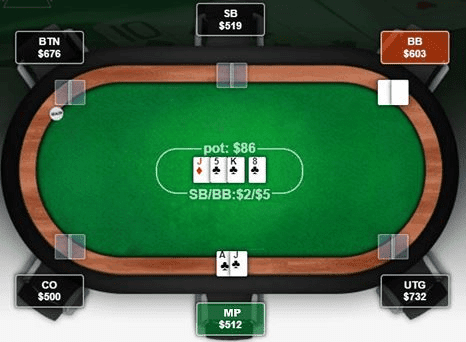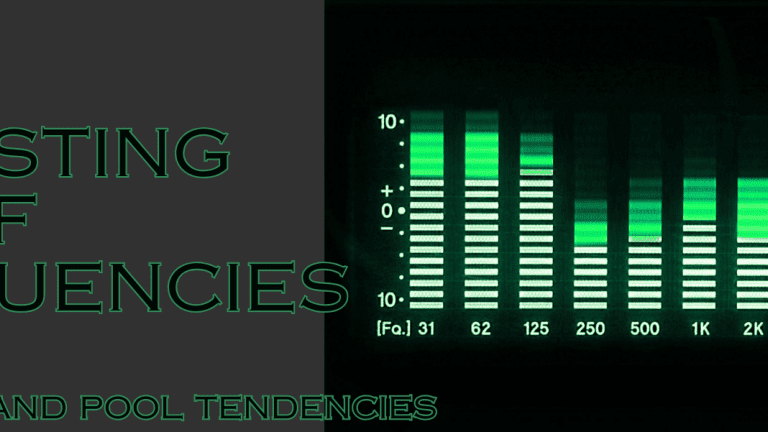In today’s article, we’ll begin our journey playing turns, which is far more fun and complex than the previous streets. However, this complexity also requires a deeper understanding of ranges and game theory, meaning that we have to discuss the following topics in a beginner-friendly way. We’ll not discuss highly detailed turn strategies, including multiple bet sizes, GTO frequencies, or parts of the game tree when we got raised on the flop, 3-bet and 4-bet pots, etc. Instead, we’ll focus on general bet sizes, exploits (such as misplayed ranges in certain lines/sizes, etc.), how to evaluate the turn cards and what to focus on, in general, when playing the turn in position, in single raised pots.

In Position
Let’s begin with in-position play, as in most cases, it’s the easiest spot to play as the preflop aggressor. You’ll have the advantage of having more information about your opponent’s range and the option to play out your equity until the river if necessary or apply pressure in a favorable situation.
Single Raised Pot
In one of the most frequent spots in short-handed Texas hold ’em poker, you’ll find yourself playing a single raised pot (either in position as the aggressor or out of position as the defender). The highest VPIPs you’ll play are around the Button and the Blinds, such as BTNvBB and SBvBB.
In today’s article, we’ll discuss two branches of the game tree for simplicity, and because of the frequency they occur are higher than other possibilities of the game tree. Namely, second barrel and delayed c-bets.
Second Barrel
We call the second barrel a turn bet, which follows the flop continuation bet from the preflop aggressor. There could be several reasons you pull the trigger for the second time, both for value and bluffing. Generally speaking, for value, you almost always want to bet. There are very few examples when you must reconsider your hand’s strength and reevaluate if you can still valuebet.
Regarding bluffing (or frequency in general) and how often you should bet, you must correctly evaluate the turn card. This means you have to compare the defending and the opening ranges. Basically, you narrow the possible hands, considering how often and what type of hands your opponent should call or raise on the flop. We can assume that the average will raise most of the strongest hands on the flop, such as sets and two-pairs (or stronger depending on flop texture), which results in brick turns; we can apply a lot of pressure. In the calling range, the strongest hands will be weak bluff-catching hands, and some will be turned into two pairs. This results in we can bet big, even overbet when we have a fantastic range and nut advantage.
We can still bet big in spots where the turn card is somewhat neutral. The usual size varies somewhere around 66-75% of the pot. When you use a somewhat polarized sizing, your range should follow. For instance, BTN versus BB, you c-bet 1/3 pot on  K
K  T
T  2 rainbow flop with
2 rainbow flop with  J
J  T (as you range bet this flop), and the turn is a
T (as you range bet this flop), and the turn is a  9 . There is not much sense in betting on your second pair; tons of better hands will call you (you valueown yourself), and also, the 9 itself could help the BB’s range. So you’ll need a stronger hand to bet for value for this 2/3 pot sizing, maybe a
9 . There is not much sense in betting on your second pair; tons of better hands will call you (you valueown yourself), and also, the 9 itself could help the BB’s range. So you’ll need a stronger hand to bet for value for this 2/3 pot sizing, maybe a  K
K  J or a
J or a  K
K  Q at least.
Q at least.
If the turn card completes a flush or straight or brings a new overcard (especially an ace), you’ll have to consider it an awful turn card for your range and act accordingly. You can decide to continue betting big with a polarized range or implement smaller sizing but risk opening up to future aggression from your opponent. Let’s say you are in a BTNvBB situation again. You c-bet the flop of  J
J  T
T  6 two-tone flop, and the turn is a
6 two-tone flop, and the turn is a  9 that completes the flush. It’s highly recommended to continue with a polar range, which includes strong showdown value hands and high equity bluffs.
9 that completes the flush. It’s highly recommended to continue with a polar range, which includes strong showdown value hands and high equity bluffs.
Delayed c-bet
In case you had the option to c-bet but you’ve missed it, still on the turn, Villain checks again. You have the possibility to bet again. In poker terms, this is what we call a delayed c-bet.
Most players facing a check back on the flop will automatically bet out with a high frequency regardless of their hand strength. Others only focus so much on their hand strength that they automatically check any low equity/non-showdown hand. You have to identify the player type you face in the actual hand and react accordingly.
When you arrive at the turn and can delay c-bet, you have to ask yourself: „What range did you check back on the flop or why did you arrive at this spot in the first place?” Think back to the flop strategies and previous articles. However, you are in position; you still ’had to’ check back your hand on the flop, which implies a few things.
First and foremost, the flop wasn’t very favorable to your range (such as low-connected boards). To protect yourself against aggression, you had to consider checking back relatively strong hands such as overpairs, top pairs, etc., which have devalued due to the flop texture and according to absolute hand strength. In theory, you should also continue with a polarized range on the turn. In a small-stakes game, the reality is that your opponents will often lead out their solid holdings, which gives you room for more aggression. However, on connected boards, you’ll also have to consider that there is a significant portion of medium-strength hands in your opponents’ range, such as pair+draws, weaker draws, etc., which are not good enough to bet them but still want to continue to see the river card.
Another reason to check back on the flop is if you face an aggressive opponent, you naturally want to protect yourself against such a player. If this is the case, it’s also highly recommended to approach turn-delayed c-bets with caution.
Size-wise, you can go many ways. If your opponent doesn’t care, snap acts, high folding statistics combined with low aggression, etc., you might get away with a small 40-50% sizing. If you checked backed a polar range, your value hands might need protection (and try to gain value), so a 2/3 pot or higher is recommended. The more aggressive your opponent, the more you should avoid small sizes, which can induce them and the more polar range you should bet.
Conclusion
The in-position play on the turn is one of the most fun plays of all. If your opponents are weak, you can run them over aggressively since most players will play straightforwardly with the top of their range. Resulting in arriving at the turn with a weak bluff catcher or a draw. When the average out-of-position player checks twice, you can take advantage of their face-up weak range and turn your range and nut advantage in your favor. In a more experienced pool, you must be more careful when choosing to second barrel or delay c-bet. Always consider how the turn card interacts with both players’ range and act accordingly. Some turn cards give you such an advantage that you can even overbet and put a lot of pressure on Villain. In contrast, others shift equities drastically, and you have to consider protecting your range, especially against tough opponents.




















